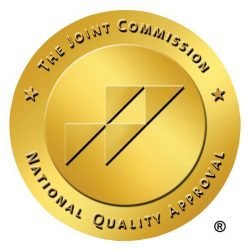TRAUMA RESOLUTION AND EATING DISORDER RECOVERY
All of us have experiences with anxiety and stress, and even with painful situations. For some of us, those painful situations can cause real trauma and lingering pain, sometimes even manifesting in post-traumatic stress disorder. Those who struggle with PTSD, or with any form of ongoing trauma, often seek tools for coping—in some cases turning to substance use and addiction, but in other cases developing eating disorders. It is no coincidence that many of the people who seek eating disorder treatment are also diagnosed with trauma.
That’s something we want to draw attention to during the month of December, as part of our ongoing #1LifeAtATime campaign. Our purpose is twofold. First, we want to make it clear that those battling trauma can experience symptoms of co-occurring disorders, and that it’s wise to be screened for eating disorders as well as substance use disorders. Second, and critically, we want to spread a message of hope. Trauma resolution can be an integral part of the eating disorder recovery process, and it can lead to lifelong peace and recovery.
How Trauma Works
Trauma can be caused by any number of experiences. We sometimes think of trauma as it relates to soldiers in a war, and intense violence can certainly be a trigger for trauma—but so can incidents of bullying, assault, rape, natural disasters, losing a loved one unexpectedly, or even losing a home or a job.
It is not uncommon for these traumas to manifest as post-traumatic stress disorder, or PTSD—an anxiety disorder that develops following the traumatic event. The symptoms of PTSD can often be debilitating, and may last for months or years following the traumatic event. When left untreated, PTSD can last a lifetime.
There are many symptoms associated with PTSD, and they can include flashbacks, nightmares, and painful memories that are impossible to suppress. Those with PTSD may go to great lengths to avoid people or places associated with their trauma. They may also have numbness or emotional detachment.
Those who struggle with trauma may develop an eating disorder as a way to cope. The development of an eating disorder may help them to suppress their painful feelings. It may help them to feel in control when a traumatic incident has left them feeling powerless.
Treatment for Trauma
For all of these reasons, all new clients who arrive at Alsana are thoroughly evaluated for co-occurring disorders and underlying conditions, and that includes evaluation for PTSD. This way, we know how to personalize the treatment process—providing trauma resolution services to those who need them, and treating not just the eating disorder but the real root problem, too.
In trauma resolution, therapists guide clients through an understanding of the trauma and its effects. This process may be painful at times, but the therapist will always be gentle and compassionate. Through trauma resolution, the individual will come to see how the eating disorder provides only fleeting relief, and also work to develop healthier coping skills.
Trauma resolution may include any number of therapeutic models, among them:
- Exposure and response prevention
- Eye Movement Desensitization and Reprocessing (EMDR)
- Cognitive restructuring
- Internal family systems therapy
- Attachment therapy
Treatment will look a little different from one client to the next, but the important thing to know is that recovery is always possible—recovery from the eating disorder, but also from the underlying trauma. The first step is seeking treatment. To learn more about eating disorder recovery, for yourself or a loved one, we encourage you to contact Alsana today.
[cta] Contact us to learn more about eating disorder recovery. [/cta]

JOIN OUR ONLINE SUPPORT GROUP
Weekly meetings
Fridays at noon / PST

VIRTUAL TREATMENT OPTIONS
Meeting each client where they are on their recovery journey. Virtually.
Our Recommended Articles
Start the road to recovery with Alsana.






